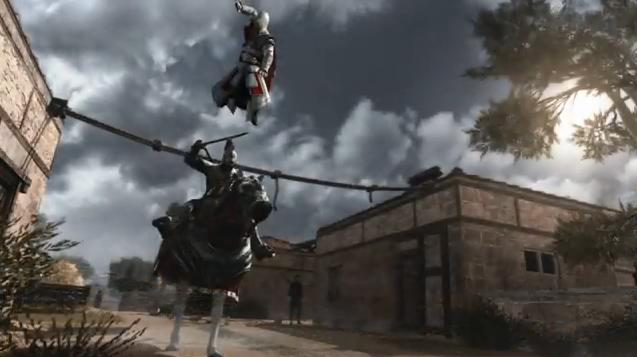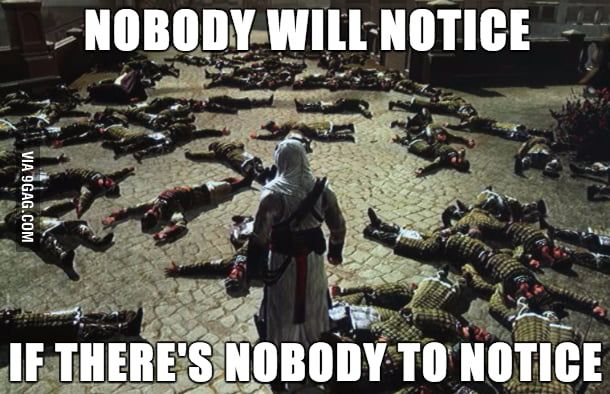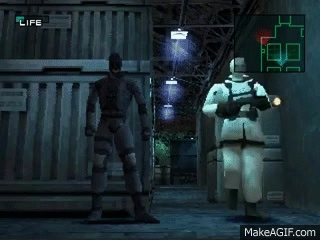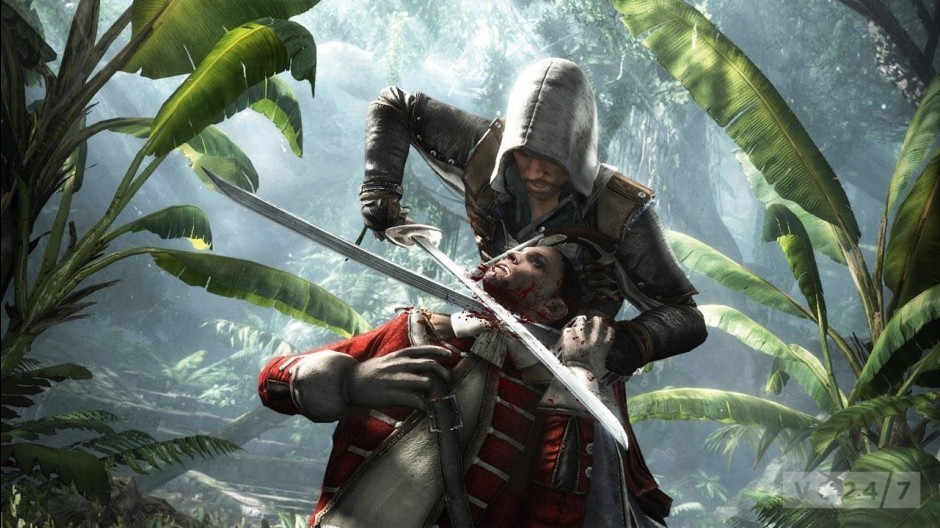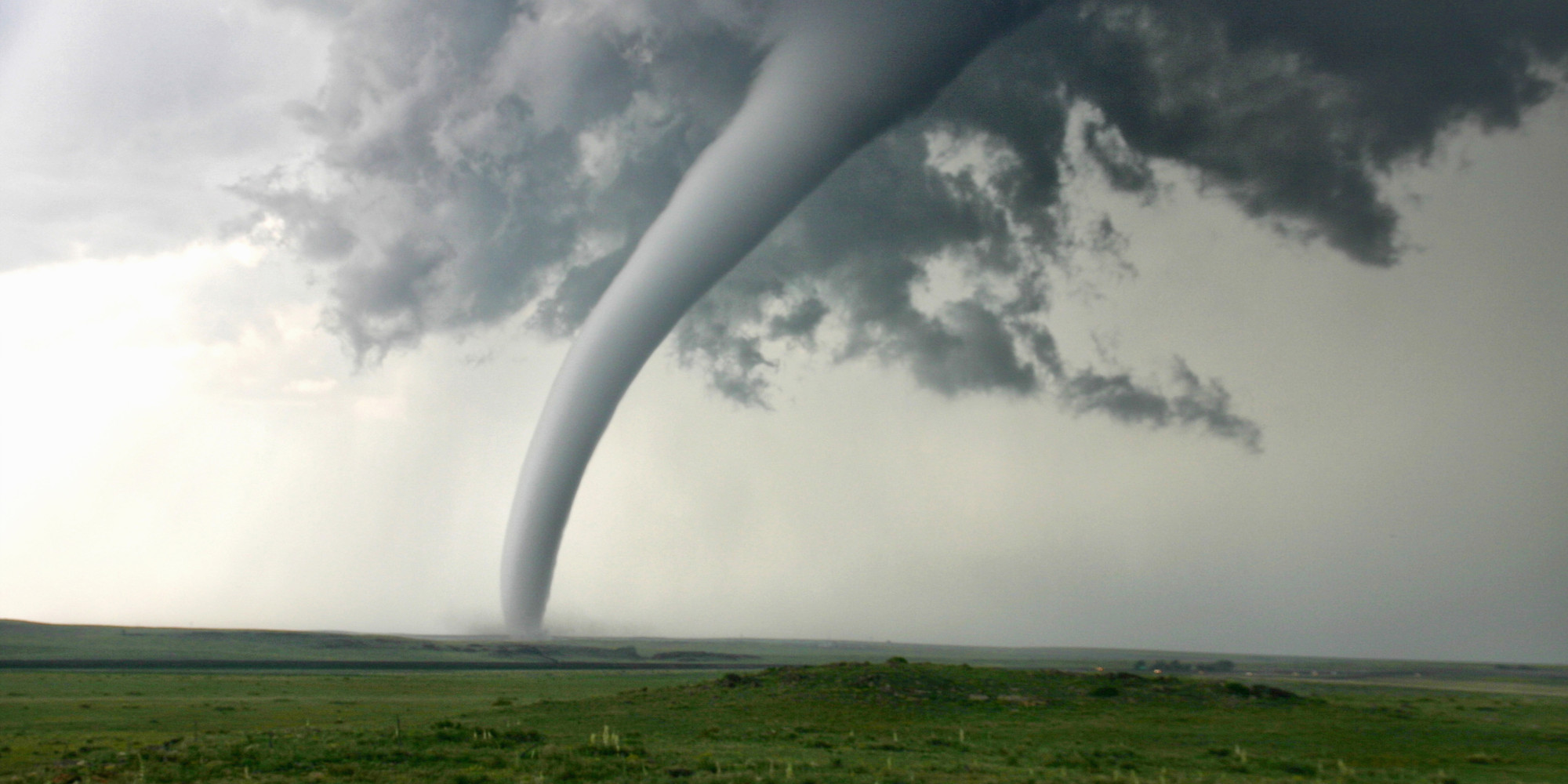The Rules
In this ruleset, stealth is simplifies to the Stealth roll. Generally, the players only have to make one roll for their characters that will last until they are spotted, or until they enter a new area in the lair they are sneaking into. Players can move normally when sneaking, but going slower than their base speed and making themselves harder to find (crouching, crawling, camouflage) can give them up to a +4 bonus to the roll. Doing anything that would jeopardize the stealth (running full speed, stomping, etc.) gives you up to a -4 to Stealth. Anyone in any armor (or no armor) can sneak without penalty if they go slow.
There are ascending modes of espionage. These help to denote what kinds of actions the enemy would take. The GM can control and guide their behavior accordingly. Different actions can lead to different modes of stealth. When it mentions passive Perception, that's a 10 + Perception Skill and other modifiers, while the active Perception is an actual 1d20 roll + Perception Skill and other modifiers.
There are ascending modes of espionage. These help to denote what kinds of actions the enemy would take. The GM can control and guide their behavior accordingly. Different actions can lead to different modes of stealth. When it mentions passive Perception, that's a 10 + Perception Skill and other modifiers, while the active Perception is an actual 1d20 roll + Perception Skill and other modifiers.
- Infiltration: This is where a lot of stealth begins. The enemy is unaware of your presence and your Stealth roll is rolled once against the enemies' Passive Perception. The stealth roll is successful until they run into a guard with a higher Perception Skill or they attempt to do some action that could alert them to their presence. You can perform stealth kills without an attack roll, but it does require another Stealth roll. If you are caught and your presence has been relayed to the rest of enemy hideout, you can no longer enter this mode until you leave for an extended amount of time (days at minimum).
- Suspicion: When an enemy has noticed your presence, but is unaware of your position. Suspicion Mode activates whenever you fail a Stealth roll by 4 or less. Perhaps they heard you kick a brick, or they smelled your stench as you passed by. Or maybe you threw a rock to distract them. You can hide, sneak by them, or kill them. You can still perform a stealth kill, but it requires both an attack roll and a Stealth roll so others nearby don't hear you.
- Discovered: You've been spotted! This happens if you fail your Stealth roll by 5 or more, or otherwise do something to get spotted. The game enters combat time at this point, so roll initiative. The players can engage in fighting, or flee and drop to Pursuit Mode. If word of your presence doesn't make it out during combat and you kill/disable all witnesses, you can drop back down to Infiltration Mode. Otherwise, go straight to the Pursuit.
- Pursuit: You've been discovered and are being chased by the enemy. You and your allies must lose your would-be captors and find a better way to hide or disguise yourself. You must break line of sight for a minute or two before dropping to Search Mode. And using Stealth goes against everyone's active Perception roll. Your pursuers will scour the area quickly, closing off exists, tracking you, setting a perimeter, and otherwise try and stop you from escaping.
- Search: The enemy has lost sight of you, but is actively searching for you. The enemy will be very active and search all of the rooms in many hiding places (under the bed, in a locker, behind curtains). So be careful when hiding against their active Perception roll. The enemy will be searching for you for a while, at least an hour or two. After some time of not finding you, it'll drop to Caution Mode.
- Caution: The enemy and their allies know of your presence and your existence, but have lost your position for a while and are now back on their patrols. Guards are alert and smarter, travelling in pairs to patrol the area tighter. Whenever a player sneaks by a patrol, they must use Stealth against the patrol's active Perception roll. This becomes the new default after you are discovered by the enemies in the hideout. You can stealth kill as if you were in Infiltration Mode.
Stealth Kills
Stealth kills are brutal strikes that may immediately kill a creature. You can only do this in Infiltration, Suspicion, and Caution Mode. When you make one, you do double the damage to the enemy. You can also apply your sneak attack after you multiply the damage. If you are using a called shot system, then use those multipliers instead.Whenever you make a stealth kill in Infiltration or Caution mode, you must make a Stealth check to make sure you don't get discovered. If you fail by 4 or less, you damage your target but surrounding enemies are now suspicious and will investigate the noise. If you fail by 5 or more, then the stealth kill fails and your target has now discovered you. Prepare for a fight!
In Suspicion Mode, if you miss your attack but pass your Stealth roll, you remain unseen. If you hit the attack and fail the Stealth roll, then you do the damage but surrounding enemies are now suspicious and will investigate the noise. If you fail both rolls, then you miss and are now discovered by your target.
If your stealth kill doesn't do enough damage to kill your target, then you are discovered and combat begins. You may choose to instead incapacitate the target, taking whatever penalties you would depending on your system of choice.
Killing people leaves bodies, which have a chance to be discovered by the enemy's allies. The GM rolls a d100 every twenty minutes to see if someone finds the body. If you simply leave the body out in the open, then there is a cumulative 15% chance that someone discovers it. If you hide it in a good, out of the way spot, then the chance is dropped to 10% or even 5% for a really good spot. Every additional kill adds another 15, 10 or 5% to the roll. Disposing a body in a way where it can never be found is still a 5% chance, since eventually someone will notice that the guard is missing. So be careful on how many people you decide to kill.
Example: Randy the Rogue is sneaking into Rogar the Orc's war camp. He has just killed an orc and has stashed the body in a covered cart. Since this is a good spot that not many will look at, the GM just rolls for a 10% on the d100. After twenty minutes, it becomes 20% chance of finding the body. At this point, Randy kills another orc and hides the body really well under some crates and supplies that won't be used for awhile. This adds 5% to the percentile roll. After twenty minutes, the GM rolls 35%, 30% for the first body and 5% for the second one. If Randy continues sneaking for another twenty minutes, this will increase to 50%, 40% for the first body and 10% for the second. Randy had better be careful!
Stealth and Combat
Stealth in combat is tricky, as everyone is alert to your presence and actively guarding. Hiding behind something while the target watches then attacking from there won't work. You have to move silently from there to a new angle of attack with a Stealth roll. If you hide from an enemy for a turn and then attack from a completely different position, or while they are distracted, you can get advantage against the victim and sneak attack damage, An enemy being attacked by two or more creatures is distracted enough for you to make a Stealth roll against their Perception roll.Example: Randy the Rogue is in combat with a terrible orc. Randy hides behind a crate as the orc watches. If Randy just stays there and tries to attack, he won't get any sneaking advantage (sneak attack). Randy needs to distract the orc or otherwise make it difficult for the orc to sense him. This could be removing the light in the area, poking the orc's eyes, a smoke bomb, or any good idea that your player can come up with. After that, Randy can roll Stealth against the orc's Perception to move to another hiding place and hide, ready to strike.
Final Thoughts
These are the basic rules I use for stealth in my games. While the modes may seem overly complicated, I find they act as good references for actions that NPCs will take against the PCs when caught. Most of the modes have the same rules, just different NPC behavior. You'll find that they naturally lead into each other. And things don't have to end with these above behaviors. You can and should have the enemy speed up whatever they were doing, or even begin moving to a different lair if it's possible. These rules leave the NPC actions firmly in your control. And from my experience, this escalation/deescalation helps to give the players a bit more actions to take when things go belly up to remain quiet. So far, things have been pretty fun with using this. I even use these for things like Disguise, or tailing someone.So let me know what you all think about it. Give it a try and see if it works in your game. And if all attempts at stealth fail, just remember...
